Journal
Structural Integration: The Journal of The Rolf Institute®
Structural Integration: The Journal of the Rolf Institute® is the professional journal representing the field of Rolfing Structural Integration. It has been in continuous publication for some forty years, initially as The Bulletin of Structural Integration and later as Rolf Lines. The publication features articles on research, feature topics, practice building, faculty perspectives, and reviews of resources.
Order a Print Copy on Amazon
July 2018This issue of Structural Integration: The Journal of the Rolf Institute®, Volume 46 No. 2 (July 2018), looks at the interface of Rolfing® Structural Integration (SI) with psyche and consciousness. Rolfing SI found a committed audience in the 1960s at Esalen® Institute, a key center for the exploration of mind-body-spirit. Dr. Ida Rolf took great interest in all aspects of the human drama; she believed that the human being was, in a sense, still evolving in both physical uprightness and structure/function as well as in consciousness. Many Rolfing practitioners remain deeply interested in and actively explore these topics, and our issue includes contributors ranging from long-time practitioners whose tenure goes back to Dr. Rolf, to Rolf Institute® faculty, to Rolfers™ cross-trained as psychotherapists, to others deeply involved in energetic and spiritual explorations of consciousness. Our Perspectives section looks at Wikipedia’s representation of Rolfing SI, and also profiles Peter Legård Nielsen, a Danish Rolfer and novelist. Besides an interview, Nielsen shares with us an excerpt from a forthcoming novel: his most personal to date, and the one most influenced by his life and by Rolfing SI. | 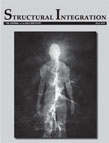 Buy this issue on Amazon |
March 2018This issue of Structural Integration: The Journal of the Rolf Institute®, Volume 46 No. 1 (March 2018), looks at the feet from the perspectives of Rolfing® Structural Integration (SI) and Rolf Movement® Integration, and also includes an interdisciplinary dialogue. Our various contributors reflect on foot structure, function, and assessment; offer guidance for both structural and movement interventions; venture into anthropological and psychobiological considerations; and discuss optimal footwear. Our Perspectives section includes contributions from Rolf Institute Faculty Michael Salveson, Peter Schwind, and Hiroyoshi Tahata, as well as a discussion about an important new book on fascia. | 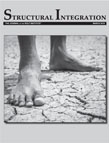 Buy this issue on Amazon |
December 2017This issue of Structural Integration: The Journal of the Rolf Institute®, Volume 45 No. 4 (December 2017), looks at Rolfing® Structural Integration (SI) and the special considerations of the female population, both in general and during pregnancy and the postpartum period. Our first theme looks at when and how our work of Rolfing SI might be applied for pregnant and postpartum women, and particular issues that can arise in terms of pain, structure, and embodied experience. We share contributions from Rolfers™ who are also nurse/midwives or doulas, as well as articles from many other Rolfers who have worked with women at these times and/or can share their experience of receiving work during and after their own pregnancies. Our second theme looks at some considerations, both physical and psychobiological, of the female body and female experience in general. Our Perspectives section remembers Tim Law – who as a child received sessions from Dr. Rolf and became the model for the Little Boy Logo of the Rolf Institute® – and includes interviews about Tensegrity Touch® and about Rolfing SI and craniosacral work. | 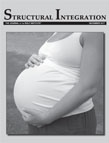 Buy this issue on Amazon |
September 2017This issue of Structural Integration: The Journal of the Rolf Institute®, Volume 45 No. 3 (September 2017), looks at Rolfing® Structural Integration (SI) for Infants and Children. Some Rolfers™ have made infants and children a particular focus of their work; others are led into working with kids after becoming parents; and others merely by happenstance – a client asking, Can I bring my child in? In this issue of Structural Integration: The Journal of the Rolf Institute®, we are pleased to share some of the many stories and understandings that have come about through this particular application of our work. Rolfing® Structural Integration (SI) for children goes back to Ida Rolf herself. She worked with many children as she developed and taught her work, and students in Rolf’s early trainings often saw her work with children firsthand. One of the children became the ‘model’ for the Little Boy Logo – used by Rolfers and the Rolf Institute to this day as an elegant symbol for the power of Rolfing sessions to align the body in gravity. Rolf gave particular attention to Rolfing SI for kids towards the end of her life when she initiated a project in Philadelphia that became the subject of a monograph, The Promise of Rolfing Children, and award-winning documentary of the same name, both by Rolfer Robert Toporek. Since Rolf’s passing, it has become a tradition to host free or low-cost children’s clinics on May 19, Rolf’s birthday, as both a tribute to our founder and a chance to continue her legacy of working with children. | 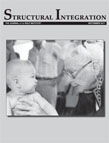 Buy this issue on Amazon |
June 2017This issue of Structural Integration: The Journal of the Rolf Institute®, Volume 45 No. 2 (June 2017), looks at Rolfing® Structural Integration (SI) and nonphysical reality – or what could loosely be termed energy. Besides her background as a biochemist, Ida Rolf studied deeply in more esoteric realms – including yoga, homeopathy, and the work of Swedenborg. She was deeply curious about (and gifted with) the interplay between the physical and the energetic. Rolf created Rolfing SI as a methodology to align the human structure in gravity – and she believed that result would support human evolution and potential. Although an inquiry into the energetic or nonphysical has never been part of the formal curriculum of the Rolf Institute®, it remains living territory for many Rolfers™. In the years since Rolf’s death, numerous Rolfers have continued this interest in both the physical and the nonphysical as related to Rolfing SI. This particular issue of Structural Integration is dedicated to their explorations and commentary. | 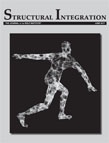 Buy this issue on Amazon |
March 2017This issue of Structural Integration: The Journal of the Rolf Institute®, Volume 45 No. 1 (March 2017), looks at cross-pollination between Rolfing® Structural Integration (SI) and other endeavors. Many practitioners come to Rolfing SI after a career in another field, some continue to have dual careers, and some have serious vocations or engage in new professional trainings while maintaining their Rolfing practices. Thus, we are Rolfers™ but we have been or still are artists, physicians, researchers, actors, lawyers, spiritual teachers, nurses, authors, psychotherapists, dancers, etc. These other interests and bodies of knowledge uniquely cross-pollinate with and inform how individual Rolfers engage the field of Rolfing SI, and the Rolfing worldview in turn affects their other interests. This makes for a dynamic field of practice, where each individual brings a perspective or facet that can add understanding of our work as a whole. The cross-pollination theme in this issue features articles by and interviews with a broad sampling of Rolfers from diverse fields. We also feature articles on closure and on the effect of radiation treatment on fascia – and how this tissue that is ‘burned from within’ requires a unique approach. | 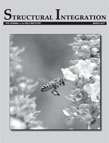 Buy this issue on Amazon |
December 2016This issue of Structural Integration: The Journal of the Rolf Institute®, Volume 44 No. 4 (December 2016), begins with a theme on shape – explored particularly through tensegrity, biotensegrity, and embryology. We hear from biotensegrity thought-leaders Stephen Levin and John Sharkey, from embryologist Jaap van der Wal, and from Rolfers whose depth of thought on tensegrity has led to interesting applications to the work of Rolfing SI. We then look at Rolfing SI vis-à-vis healthcare. Should Rolfers™ operate within the healthcare system? Should we explicitly opt out? We hear a multiplicity of viewpoints from members of our community. All are deeply familiar with the world of healthcare either through another vocation (medical doctor, physical therapist, MPH/nurse) or through close networking with healthcare professionals in their communities. | 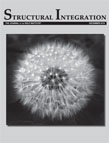 Buy this issue on Amazon |
September 2016This issue of Structural Integration: The Journal of the Rolf Institute®, Volume 44 No. 3 (September 2016), begins with a collection of interviews and articles on the Rolf lineage. As a largely oral tradition, passed from instructor to student, our lineage is paramount. We first look to Michael Salveson, Jan Sultan, and Emmett Hutchins, all individuals trained by Ida Rolf and among the first instructors she appointed. We then hear more about the dynamic early years of Rolfing SI from Judith Aston-Linderoth, who developed the earliest iteration of what became the Rolf Movement® work, and from Harvey Ruderian, a long-time practitioner. Rolfing SI is a manual approach to organizing the body in gravity, and fascia is the medium Rolfers™ engage with. This issue’s second topic is fascia, but viewed through an osteopathic lens – through the work of Jane Eliza Stark, a manual osteopathic practitioner and historiographer. Stark’s work on the contiguity and fluidity of fascia offers an interesting angle that suggests both similarities and divergences in thinking and approach. We close out the issue with a practical offering from Jeffrey Maitland. His ‘ankle-lean intervention sequence’ works to establish horizontals in the structure in a unique way, giving us another tool to support our work of structural integration. | 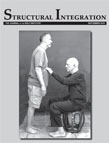 Buy this issue on Amazon |
June 2016Rolfing SI is both art and science. Though Dr. Ida P. Rolf was a practicing scientist with a PhD in biochemistry, she, like many highly creative types, reached her conclusions intuitively, confident that future scientific understanding would one day prove her right. She once famously stated, I know that it works; I don’t know why it works. In recent years the explosion of research concerning fascia has validated many of her insights and spurred Rolfers™ to join the scientific community in its investigations, bringing with them their unique point of view, a direct lineage from its founder. From these endeavors, we are beginning to develop a scientific understanding of why our work is so effective. This issue of Structural Integration: The Journal of the Rolf Institute®, Volume 44 No. 2 (June 2016), focuses on this new wave of research and the role Rolfers are playing in it. Articles cover topics including how to read research with a discriminating mind, how to begin to do research, and the work of some of the Rolfers who are in the vanguard of either fascial research or research into Rolfing SI as a methodology. | 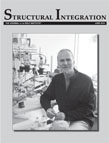 Buy this issue on Amazon |
March 2016The themes of this issue, Volume 44, Number 1 (March 2016), are the Advanced Training as the culmination of the training of a Rolfer™, and the Rolf Institute’s Advanced Faculty shared through profiles and their contributions to our field. The Rolf Institute was founded by Ida P. Rolf to carry on her life’s work of Rolfing SI. To support this end, she charged her early Advanced Faculty with ongoing teacher training of new Rolfing instructors, as well as with both continuing her legacy and developing her work. For Rolf, the work was never static. The history of how she presented her work suggests she spent decades tinkering with her hallmark Ten Series of basic Rolfing SI. She did not bring forth an advanced series until late in her life, so it was left to her ‘lineage holders’ to work with and develop the body of knowledge left to us. To do this, they had to fully understand what she had developed, so an early task was to deconstruct the Ten Series to its component Principles of Rolfing SI, which ‘decode’ its inherent order and are the foundation of its success as a holistic approach to global transformative change. With these ‘building blocks’, the Advanced Faculty of the Rolf Institute were able to reassess and evolve Rolf’s advanced work, eventually developing it into the truly client-centered non-formulistic approach that is taught in the latest (third) iteration of the Advanced Training. | 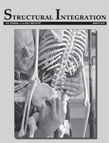 Buy this issue on Amazon |
November 2015Ida P. Rolf developed and taught Rolfing® SI for the human body, but a number of the Rolfers™ who carry on her work have applied the Rolfing conceptualization of structure in gravity and fascial touch to animals, particularly horses, dogs, and cats. This issue of Structural Integration: The Journal of the Rolf Institute®, Volume 43 No. 3 (November 2015), has two themes: 1) Rolfing SI and Animals, and 2) The Human Animal. In the first, Rolfers share about their work to assist animals with structural and movement issues. Other articles reveal how animals interact and assist our work and understanding. In the second theme we have various considerations of the ‘human animal’, taking the perspectives of evolution, anthropology, and paleontology to understand more deeply about human structure; a deeper look at the polyvagal theory and the respiratory system; and considerations of how humans today live, for better or worse. Additional articles in the Perspectives section discuss recent research conferences on fascia and biotensegrity, the structure of the foot, and relating to gravity. | 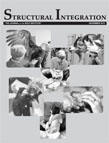 Buy this issue on Amazon |
July, 2015Although Rolfing Structural Integration (SI) is primarily a form of manual therapy to reorganize body structure through the fascia, it has long been observed that Rolfing sessions can have an equally strong transformative impact on clients’ minds and ways of being. In this issue of Structural Integration: The Journal of the Rolf Institute®, Volume 43 No. 2 (July 2015), we focus on the mind-body relationship. In thirteen articles, our authors discuss 'Mind' through the lenses of trauma, meaning structures, metaphor, language, attachment theory and the therapeutic relationship, and meditation and spirituality. Additional articles in the Perspectives section discuss biotensegrity, osteopathy, hip dysfunction, and Rolfing history. | 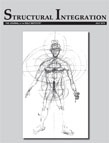 Buy this issue on Amazon |
March, 2015This issue of Structural Integration: The Journal of the Rolf Institute®, Volume 43, No. 1 (March 2015) has a theme of Working with Performers. In the collection of articles on this theme, Rolfing practitioners, who are also dancers, actors, or singers, address the role Rolfing Structural Integration can play in enhancing performance in these disciplines through direct fascial manipulation, through movement integration, and through the therapeutic relationship. The issue also includes a number of other varied topics, among them articles on the tongue, lumbar / pelvic pain, structural aging, and the ongoing case-study research into Rolfing Structural Integration being carried out by Brazilian Rolfers™. | 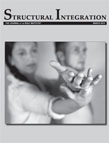 Buy this issue on Amazon |